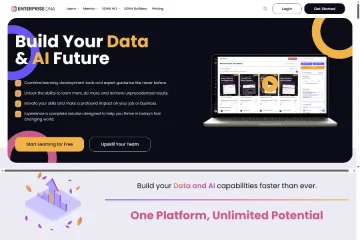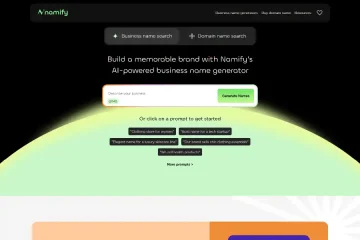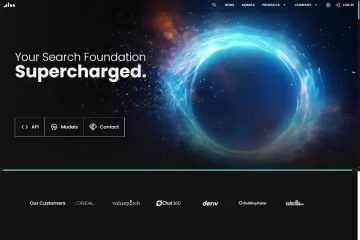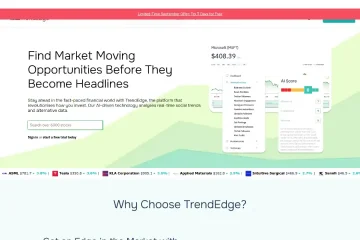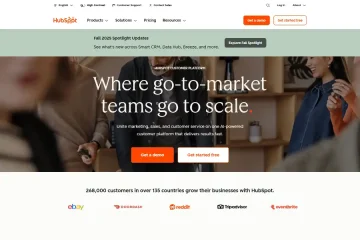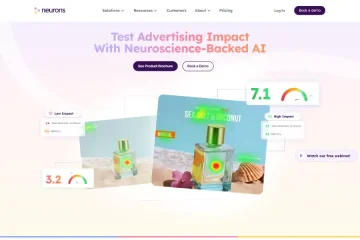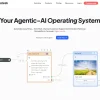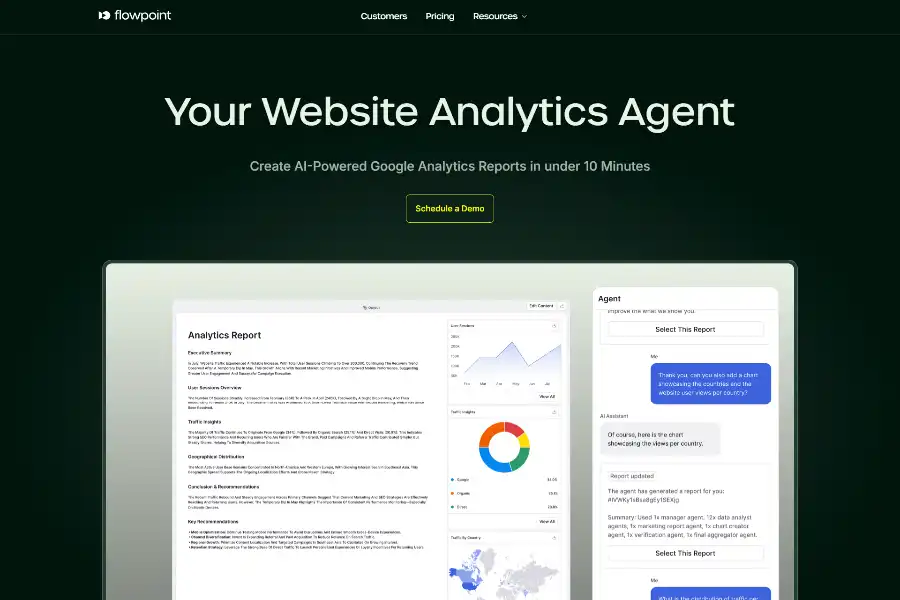
Flowpoint: The Agentic Process Builder That Turns Website Data into Autonomous Marketing Wins
Introduction: From Static Analytics to Living Workflows
In the crowded arena of web-analytics platforms, Flowpoint positions itself as more than another dashboard—it is an “agentic process builder” that stitches together AI agents, specialized marketing tools, and real-time data into self-driving workflows. Traditional analytics tells you what happened; Flowpoint’s AI agents decide what to do next and actually do it. For marketers who are tired of exporting CSVs, writing ad-hoc SQL, or waiting on BI teams, Flowpoint promises an end-to-end system where data ingestion, insight generation, and campaign execution happen in one no-code canvas.
Technical Architecture: How the “Agentic” Layer Works
Multi-Agent Orchestration Engine
At the heart of Flowpoint is an orchestration layer inspired by large-language-model (LLM) function-calling patterns. Instead of a monolithic model, Flowpoint deploys small, fine-tuned agents—each responsible for a single marketing task such as anomaly detection, SEO crawl, or budget re-allocation. These agents expose their capabilities as “tools” with OpenAI-compatible JSON schemas. A meta-agent (internally nick-named “The Manager”) selects, sequences, and retries tool calls until the objective defined in the visual workflow is met. The Manager itself is a fine-tuned variant of GPT-4 Turbo with reinforcement learning from human feedback (RLHF) drawn from thousands of historical campaign optimizations.
Data Fabric & Privacy Model
Flowpoint’s data fabric uses a columnar store built on ClickHouse for sub-second aggregations over hundreds of millions of events. All PII is tokenized on ingestion using format-preserving encryption, and each agent receives only the minimum data slice required for its task. The platform is SOC 2 Type II and GDPR-compliant; EU customer data never leaves Frankfurt-based AWS nodes.
Real-Time Stream Processing
Change data capture (CDC) connectors listen to Google Analytics 4, Meta Ads, Shopify, Segment, and 40+ other sources. Events are normalized into a canonical “WebEvent” schema and streamed through Kafka topics. Windowed stream processors compute metrics like p95 page load time or predicted lifetime value (pLTV) every 60 seconds, feeding the agents with up-to-date context.
Core Functional Modules
Website Intelligence Agent
Performs continuous technical SEO audits (Core Web Vitals, schema validation, internal link equity) and surfaces fixes ranked by predicted traffic lift. A built-in diff engine highlights code-level changes required; users can approve or auto-push via GitHub Actions.
Funnel Optimizer Agent
Uses Bayesian structural time-series models to detect where drop-offs deviate from historical patterns. When significance >95 %, it auto-generates A/B test hypotheses (e.g., “Add trust badges on checkout step 2”), deploys them through native integrations with Google Optimize or VWO, and monitors until a winner emerges.
Campaign Budget Re-allocator
Every hour, the agent forecasts marginal cost-per-acquisition (mCPA) across channels via gradient-boosted trees trained on the last 90 days. If reallocating $X from Meta to TikTok yields a lower expected mCPA above a user-defined threshold, the agent pauses old ad sets and spins up new ones via APIs, all while sending Slack summaries.
Content Intelligence Agent
Scrapes top-20 SERP competitors for a given keyword cluster, extracts common heading structures, sentiment polarity, and readability scores, then drafts outline briefs in Notion or Google Docs. Marketers can approve or iterate before the agent schedules publishing via Webflow or WordPress webhooks.
Market Applications & Proven Use Cases
E-commerce Growth Teams
A mid-sized DTC skincare brand connected Shopify, Klaviyo, and Meta Ads. Within six weeks, Flowpoint’s agents identified that 38 % of mobile users abandoned carts due to a third-party payment widget that increased CLS. After auto-deploying a fix, revenue per visitor rose 11.4 %. The Budget Re-allocator simultaneously shifted 22 % of spend from Facebook to TikTok Spark Ads, driving a further 17 % uplift in ROAS.
SaaS Demand Generation
A Series-B SaaS company used Flowpoint to replace a patchwork of Zapier zaps and Looker Studio dashboards. The Funnel Optimizer Agent found that visitors arriving via review sites had a 3× higher activation rate. Flowpoint auto-created a dedicated landing variant and increased demo requests by 29 % quarter-over-quarter.
Agency Client Management
A 25-person performance agency white-labels Flowpoint to manage 40 client accounts. Custom “playbooks” (workflow templates) let junior strategists deploy best-practice audits in minutes. The agency reports a 4-hour reduction in weekly reporting per client and improved upsell revenue by surfacing under-optimized ad accounts.
Onboarding & Day-to-Day Usage
No-Code Workflow Canvas
Marketers drag-and-drop triggers, agents, and actions onto a canvas reminiscent of Figma. Triggers can be time-based (“every Monday at 9 a.m.”), event-based (“bounce rate > 60 %”), or metric-based (“ROAS < 150 %”). Each node exposes plain-English parameters—“increase daily budget by max 20 % if mCPA improves by at least 15 %.”
Approval Gates & Human-in-the-Loop
While agents can act autonomously, users can insert approval gates for spend above $500, code pushes, or content publication. Notifications land in email, Slack, or Microsoft Teams with one-click approve/reject buttons.
Templates Library
Pre-built templates such as “Black Friday War-Room” or “Product Launch Playbook” allow marketers to import battle-tested workflows. Templates include KPI guardrails, threshold variables, and even suggested copy snippets generated via LLMs.
Pricing & Editions
Flowpoint uses seat-based pricing with usage tiers.
Starter $79 / month – Up to 50 k events, 3 agents, community support.
Growth $249 / month – 500 k events, unlimited agents, 3 approval seats, live chat.
Scale $799 / month – 5 M events, custom agents, SSO, SOC 2 report sharing.
Enterprise Custom – Dedicated VPC, on-prem option, custom model fine-tuning, and 99.9 % SLA.
A 14-day free trial includes all Growth features; no credit card is required.
User Feedback & Market Reception
On G2, Flowpoint holds 4.8 / 5 stars from 87 reviews as of July 2025. Users praise the “set-it-and-forget-it” budget rules and the clarity of AI-generated recommendations. Critics mention a learning curve when building advanced branching logic; Flowpoint’s product team recently released an AI co-pilot that converts plain-English goals into workflows to mitigate this.
Tech blogs such as MarketingLand and DemandGen Report highlight Flowpoint as “post-analytics” software, emphasizing its shift from passive insights to active execution. Industry analysts at IDC estimate Flowpoint’s 2024 revenue at $8.1 M, projecting 140 % YoY growth driven by mid-market e-commerce adoption.
Competitive Landscape
Compared to traditional BI (Tableau, Looker), Flowpoint offers actionability instead of visualization. Against point-solutions like Optmyzr or Revealbot, Flowpoint provides cross-channel orchestration rather than siloed ad optimization. Relative to general RPA tools (Zapier Make), Flowpoint is purpose-built for marketing data schemas, offering pre-mapped UTM taxonomies and channel-specific APIs out of the box.
Security, Compliance & Reliability
Beyond SOC 2 and GDPR, Flowpoint is pursuing ISO 27018 for cloud privacy. All customer data is encrypted at rest with AES-256 and in transit via TLS 1.3. A public status page shows 99.95 % uptime over the last 12 months, backed by multi-region failover on AWS (us-east-1, eu-central-1).
Roadmap & Vision
Flowpoint’s 2025–2026 roadmap includes:
Multimodal agents that ingest heat-map recordings and automatically generate Figma wireframes for high-friction pages.
Predictive creative scoring—training diffusion-based vision models to forecast ad CTR from raw image assets.
Offline conversion import from CRMs such as Salesforce and HubSpot for true closed-loop attribution.
A marketplace where third-party developers can publish custom agents and monetize usage, similar to Shopify’s app store.
CEO Maria-Luisa Castañón states the long-term vision is to become the “operating system for growth teams,” where launching a new campaign is as simple as describing it to an AI colleague.
Conclusion: Should You Adopt Flowpoint?
Flowpoint is best suited for growth-oriented teams that have moved beyond vanity metrics and are ready to delegate tactical execution to autonomous agents. If your current stack consists of one tool for dashboards, another for A/B testing, and yet another for bid management, Flowpoint’s consolidation can deliver both cost savings and performance gains. The 14-day free trial and template library make experimentation low-risk, while SOC 2 compliance addresses enterprise procurement concerns. For organizations still wrestling with data cleanliness or lacking defined growth KPIs, Flowpoint’s agents may surface more questions than answers—yet even in those cases, the platform’s audit agents can accelerate the journey to data maturity. In an era where marketing velocity outpaces human bandwidth, Flowpoint offers a pragmatic path to truly self-optimizing websites.

